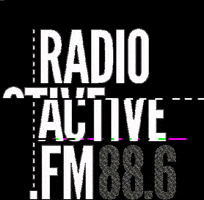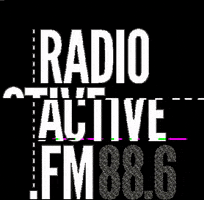
Nuclear Testing Chronology: 1950's


1951
April - Operation Greenhouse starts at Enewetak. Four atomic tests are conducted.
1952
November - Operation Ivy opens at Enewetak and includes the first test of a hydrogen device. The Mike test vaporizes one island and is estimated at 10.4 megatons, or some 750 times larger than the Hiroshima bomb.
1954
January - the Air Force and Army men arrived on the Bikinians' former, temporary home of Rongerik Atoll, and jointly set up a weather station to monitor conditions in preparation for Operation Castle. This was a series of tests that would include the first air-deliverable, and the most powerful hydrogen bomb ever detonated by the United States.
February 28 - 6 p.m. On the eve of the Bravo test, weather reports indicate that atmospheric "conditions were getting less favorable." At midnight, just seven hours from the shot, the weather report reports there are "less favorable winds at 10,000 to 25,000-foot levels." Winds at 20,000 feet "were headed for Rongelap to the east.". Documented proof exists that Joint Task Force-7 knew that the winds were blowing east from Bikini toward Rongerik Atoll and other inhabited islands because of the continuous reports coming in from their weather station.
The following two videos are about the first hydrogen [or thermonuclear]
explosion named "Mike" [short for Micronesia I'm told] in 1952 on Enewetak, and "Bravo" fired on Bikini in 1954, the world's first deliverable H-bomb. The third video below explains the difference between an atomic [fission] A-bomb and a hydrogen [fusion] H-bomb.
Click on this link to read an interesting article about the Declassification of the Ivy-Mike videos you have just seen:
http://blog.nuclearsecrecy.com /2012/02/08/weekly-document-13- declassifying-the-ivy-mike-film-1953/

"Bravo" at the Lawrence Livermore Lab awaiting
detonation. Edward Teller's use of the Teller-Ulam design with the lithium-deuteride fuel as a solid instead of a liquid [as in the 1952 "Mike" shot]
enabled the miniaturization of the hydrogen bomb.

The 100-foot steel tower for "Bravo" at Bikini
March 1 - Bikini's weather outlook downgraded to "unfavorable" and Joint Task Force 7 directs several ships to move 20 miles to the south to remove them from the expected fallout zone. Despite weather reports showing that winds are blowing in the direction of inhabited islands, the March 1 Bravo hydrogen bomb test is detonated at Bikini. At 15 megatons, it is 1,000 times the strength of the Hiroshima bomb.
The area was illuminated by a huge and expanding flash of blinding light. A raging fireball of intense heat that measured into the millions of degrees shot skyward at a rate of 300 miles an hour. Within minutes the monstrous cloud, filled with nuclear debris, shot up more than 20 miles and generated winds hundreds of miles per hour. These fiery gusts blasted the surrounding islands and stripped the branches and coconuts from the trees. Joint Task Force ships, which were stationed about 40 miles east and south of Bikini in positions enabling them to monitor the test, detected the eastward movement of the radioactive cloud from the 15 megaton blast. They recorded a steady increase in radiation levels that became so high that all men were ordered below decks and all hatches and watertight doors were sealed.
Within hours a gritty, white ash is enveloping islanders on Rongelap and Ailinginae Atolls. A few hours later, American weathermen are exposed to the snowstorm of fallout on Rongerik, and still later the people of Utrik and other islands experience the fallout "mist". Those exposed experience nausea, vomiting and itching skin and eyes. March 3 Rongelap islanders are evacuated 48 hours later, and Utrik is evacuated 72 hours after Bravo. Both groups are taken to Kwajalein for observation. Skin burns on the heavily exposed people begin to develop, and later their hair falls out. The U.S. Atomic Energy Commission issues a statement to the press calling Bravo a "routine atomic test", and stating that some Americans and Marshallese were "unexpectedly exposed to some radioactivity. There were no burns. All were reported well."
Millions of tons of sand, coral, plant and sea life from Bikini's reef, from three islands [Bokonijien, Aerokojlol, Nam] and the surrounding lagoon waters were sent high into the air by the blast. One-and-a-half hours after the explosion, 23 fishermen aboard the Japanese fishing vessel, the Lucky Dragon, watched in awe as a "gritty white ash" began to fall on them. The men aboard the ship were oblivious to the fact that the ash was the fallout from a hydrogen bomb test. Shortly after being exposed to the fallout their skin began to itch and they experienced nausea and vomiting. One man died.
Meanwhile, on Rongelap Atoll (located about 125 miles east of Bikini), three to four hours after the blast, the same white, snow-like ash began to fall from the sky onto the 64 people living there and also onto the 18 people residing on Ailinginae Atoll. Bravo was a thousand times more powerful than the Fat Man and Little Boy atomic bombs that were dropped on Nagasaki and Hiroshima during the end of World War II. Its "success" was beyond the wildest dreams of the American scientists who were involved in the detonation--they thought that the blast would only carry a payload of approximately 3 megatons.
The Rongelapese, not understanding what was happening, watched as two suns rose that morning, observed with amazement as the radioactive dust soon formed a layer on their island two inches deep turning the drinking water a brackish yellow. Children played in the fallout; their mothers watched in horror as night came and they began to show the physical signs of exposure. The people experienced severe vomiting and diarrhea, their hair began to fall out, the island fell into a state of terrified panic. The people had received no explanations or warnings whatsoever from the United States government. Two days after the test the people of Rongelap were finally taken to Kwajalein for medical treatment.

The immediate fallout pattern from Castle-"Bravo" on March 1, 1954. Despite an alarming midnight weather report six hours before "Bravo" that showed winds at 20,000 were heading to inhabited Rongelap, the decision to shoot was given. Please see the tab above for"Health, Environmental & Radiation Studies" for more details about the health effects from "Bravo."

This screenshot from a 1955 Atomic Energy Commission [AEC] film depicts what would happen if the former Soviet Union dropped a "Bravo"-sized hydrogen bomb on Washington, D.C. with the radioactive fallout spreading up the Eastern Seaboard and irradiating 15% of the U.S. population. The "Bravo" fallout imprint [in purple] has been superimposed on a map of the East Coast in the 1955 AEC film, indicating exactly what "Bravo" was all about: Collecting human and environmental data about the short, intermediate and long-term effects of radioactive fallout on humans at the height of the Cold War with the "Ruskies." The AEC called this human experiment "Project 4.1" [See Adam Horowitz's excellent 90-minute award-winning documentary titled "Nuclear Savages: Project 4.1."
Go here: https://www.youtube.com/watch?v=aakHPqqkOjI
And go Here: https://www.videoproject.com/Nuclear-Savage-The-Islands-of-Secret-Project-4-1.html
March 7- Project 4.1, "Study of Response of Human Beings Exposed to Significant Beta and Gamma Radiation due to Fallout from High Yield Weapons," establishes a secret medical group to monitor and evaluate the Rongelap and Utrik people. Epilation at 28 days post-Bravo and Beta burns at 40 days after Bravo on both of these Rongelap girls 120 miles downwind of Bravo.
The acute dose was around 175 rads of whole-body gamma.
April - A Project 4.1 memo recommends that the exposed Rongelap people should have "no exposure for (the) rest of (their) natural lives." April 29 Department of Defense report states that the "only other populated atoll which received fallout of any consequence at all was Ailuk...It was calculated that a dose...would reach approximately 20 roentgens. Balancing the effort required to move the 400 inhabitants against the fact that such a dose would not be a medical problem it was decided not to evacuate the atoll."
Go here for the official U.S. Govt. report titled "Project 4.1 - Study of Response of Human Beings Exposed to Significant Fallout Radiation": https://docs.wixstatic.com/ugd/d75784_706741853cdc4643b73942dd89414ddb.pdf
May- Utrik Islanders allowed to return home because, according to U.S. officials, "Their island was only slightly contaminated and considered safe for habitation."
A persistent question about the controversial 1954 "Bravo" H-bomb test at Bikini Atoll concerns the so-called "accidental" wind shift during "Bravo" that caused the "accidental" distribution of deadly radioactive fallout on several downwind and inhabited atolls from Bikini. If you go to 35:35 minutes into this rare version of Dennis O'Rourke's award-winning and legendary 1985 film "Half Life," you will hear the original version of the "accidental" wind shift theory from President Eisenhower's first Atomic Energy Commission [AEC] chair Lewis ["Nuclear energy too cheap to meter"] Strauss in a press conference a few weeks after "Bravo" in March 1954, where Strauss says "The wind failed to follow the predictions."
Alternatively the Air Force weathermen monitoring the winds before, during and after "Bravo" tell a much different story about the winds during "Bravo." Go to 39 minutes into "Half Life" to hear these "Bravo" weathermen expose the Big Lie about the "accidental" wind shift during the "Bravo" test in 1954.
And go here to read a 1982 New York Times interview with Gene Curbow, the head weatherman during "Bravo," plus Mr. Curbow's 1983 United Nations testimony about "Bravo."
Who do you believe is telling the truth, the U.S. Government or the actual people monitoring the weather one month before, during, and after the March 1st, 1954 "Bravo" blast?
1955
Bertrand Russell and Albert Einstein issued the Russell-Einstein Manifesto calling for the abolition of nuclear weapons FOLLOWING THE DISASTROUS RADIOACTIVE FALLOUT INCIDENT FROM "BRAVO" AT BIKINI IN THE MARSHALL ISLANDS
1955
January - Trust Territory ships continued to have problems unloading food in the rough seas around Kili and the people once again suffered from starvation. The following year the food shortage problems grew even worse. Consequently, the United States decided to give the Bikinians a satellite community located on public land on Jaluit Atoll, thirty miles to the north. Three families moved to Jaluit
1956
may - Operation Redwing begins at Enewetak and Bikini. A total of 17 nuclear tests, including several hydrogen bombs, are detonated. November U.S. officials give the Enewetak Islanders living on Ujelang $25,000 cash and a $150,000 trust fund (earning 3 1/3 percent annually) as compensation. Bikini Islanders living on Kili are given $25,000 cash and a $300,000 trust fund (yielding about $15 per person annually). Throughout the 1950s, both the Bikinians and Enewetakese face food shortages and repeated bouts of near starvation, as their "temporary" islands prove difficult and inhospitable.
1957
July - Rongelap is declared safe for rehabitation "in spite of slight lingering radiation." The Rongelap people, who have been living temporarily in Ejit Island, Majuro, return to Rongelap. Brookhaven National Laboratory scientists report about Rongelap: "Even though the radioactive contamination of Rongelap Island is considered perfectly safe for human habitation, the levels of activity are higher than those found in other inhabited locations in the world. The habitation of these people on the island will afford most valuable ecological radiation data on human beings."
1957
Stemming from the 1954 "Bravo" H- bomb at Bikini and the radioactive fallout hazard and on the heels of the 1955 Russell-Einstein Manifesto the Pugwash Conference was born calling for the elimination of nuclear weapons. [Pugwash co-founder Sir Joseph Rotblat and Pugwash won the 1995 Nobel Peace Prize].
1958
May - Operation Hardtack begins at Enewetak and Bikini, with 35 tests, including several hydrogen bombs. August The last nuclear detonation in the Marshall Islands takes place on August 18, bringing to 67 the total of nuclear weapons tests at Bikini and Enewetak.





